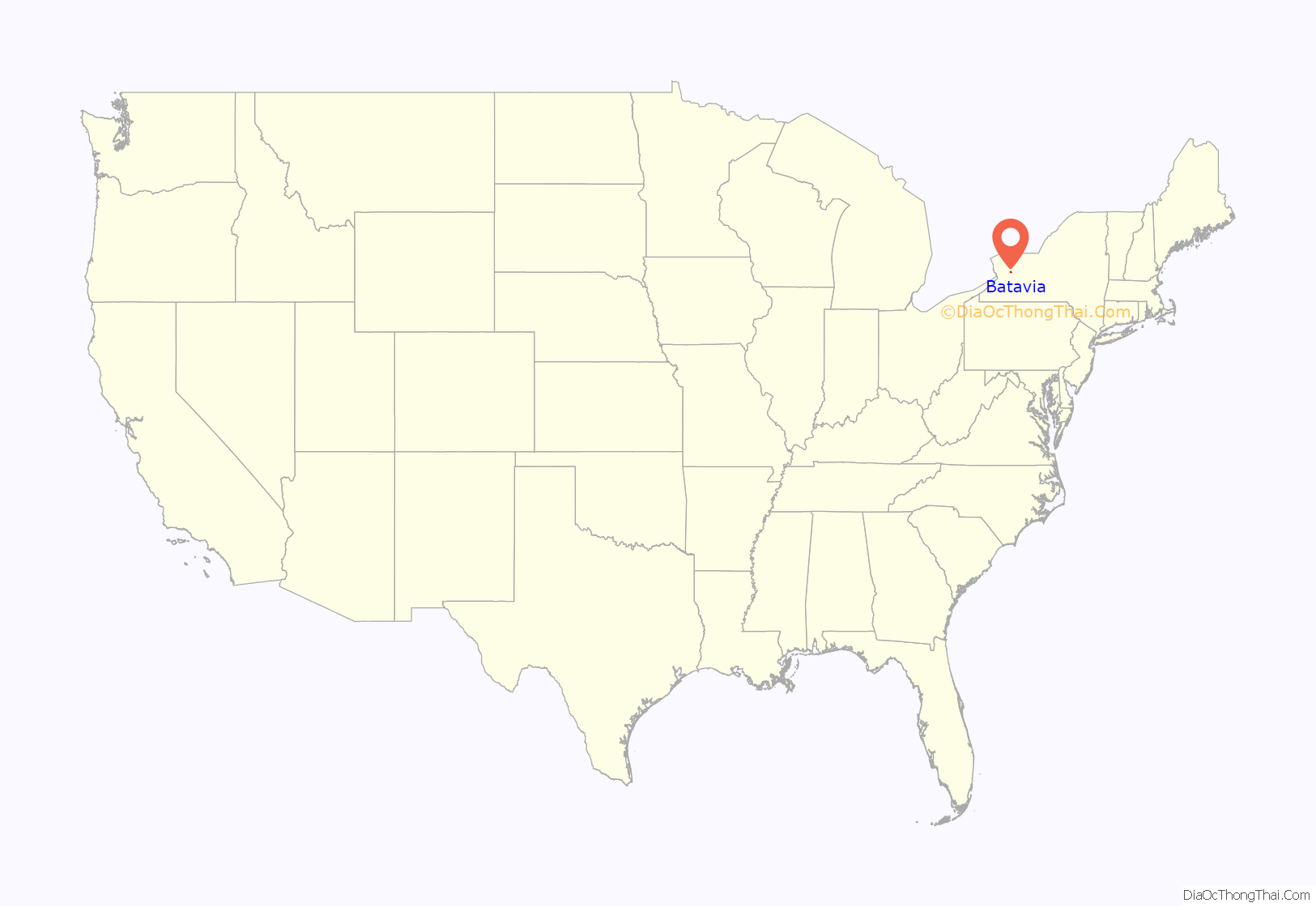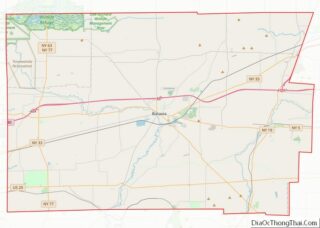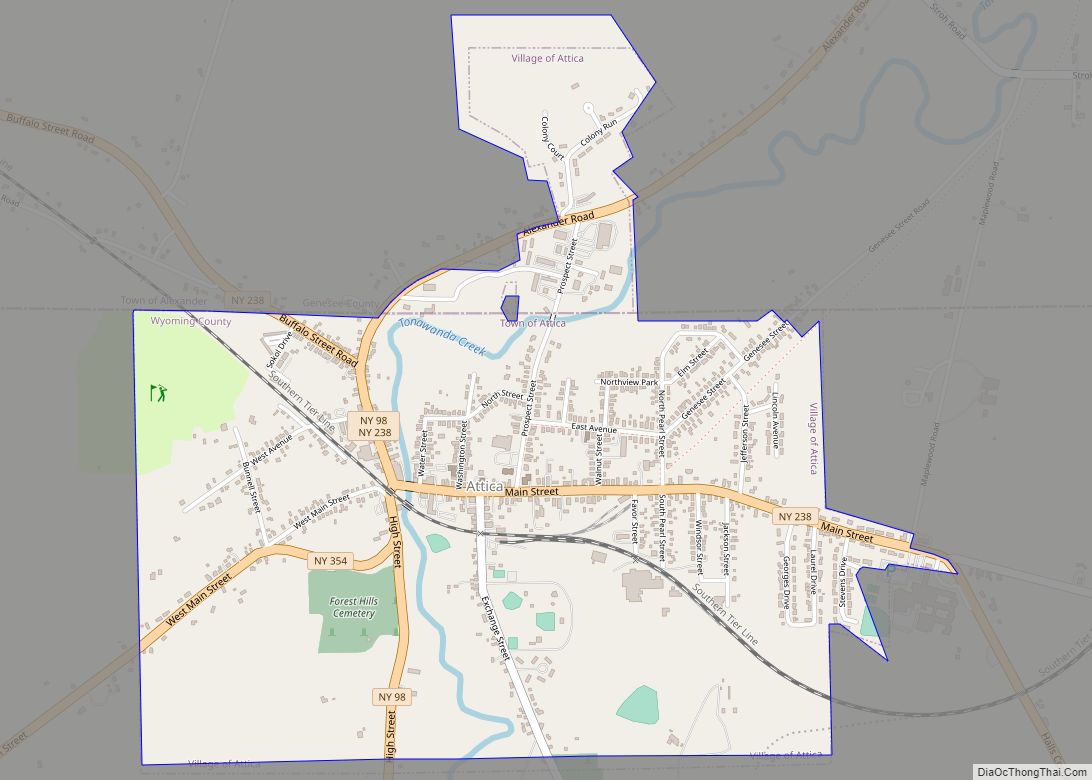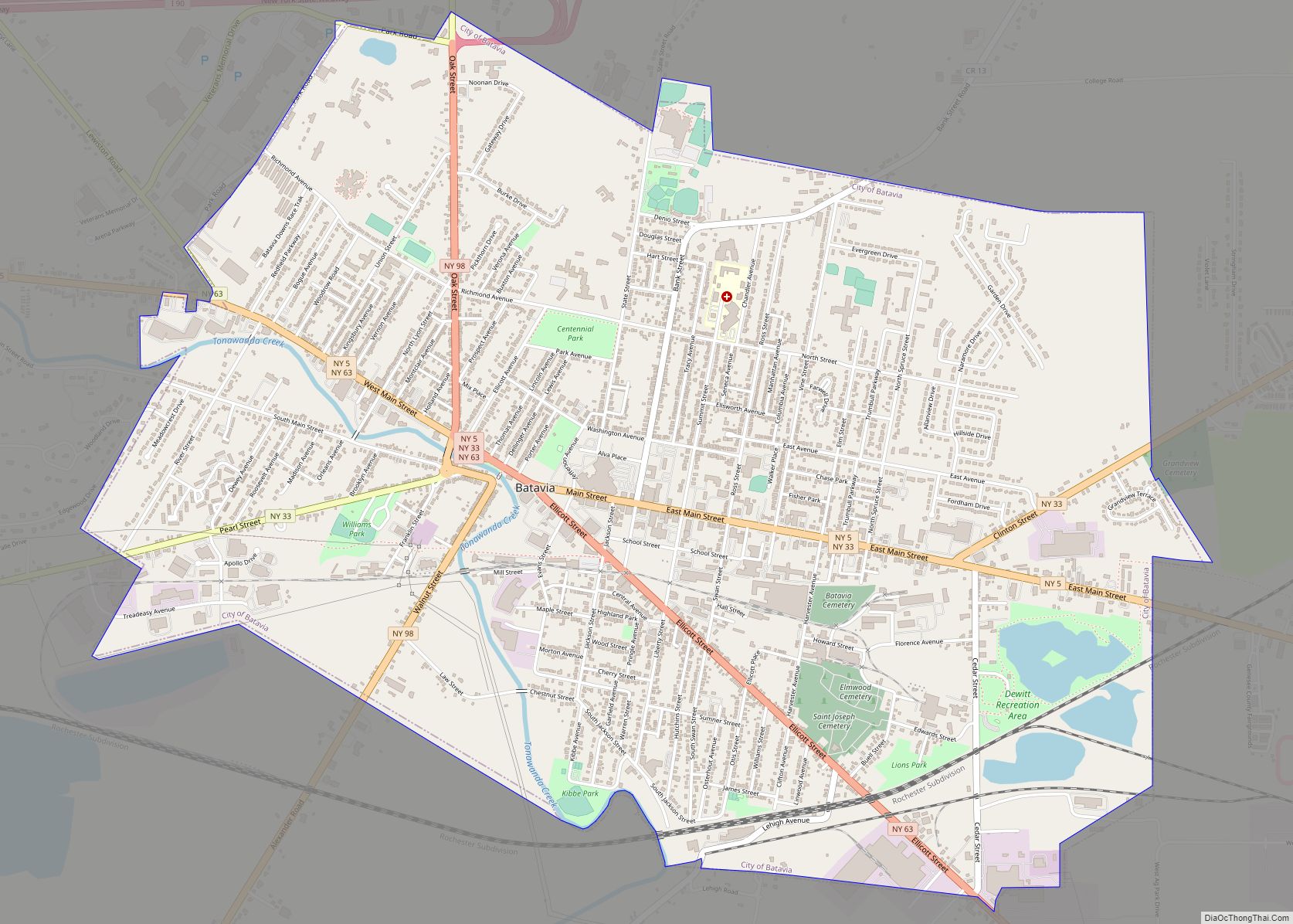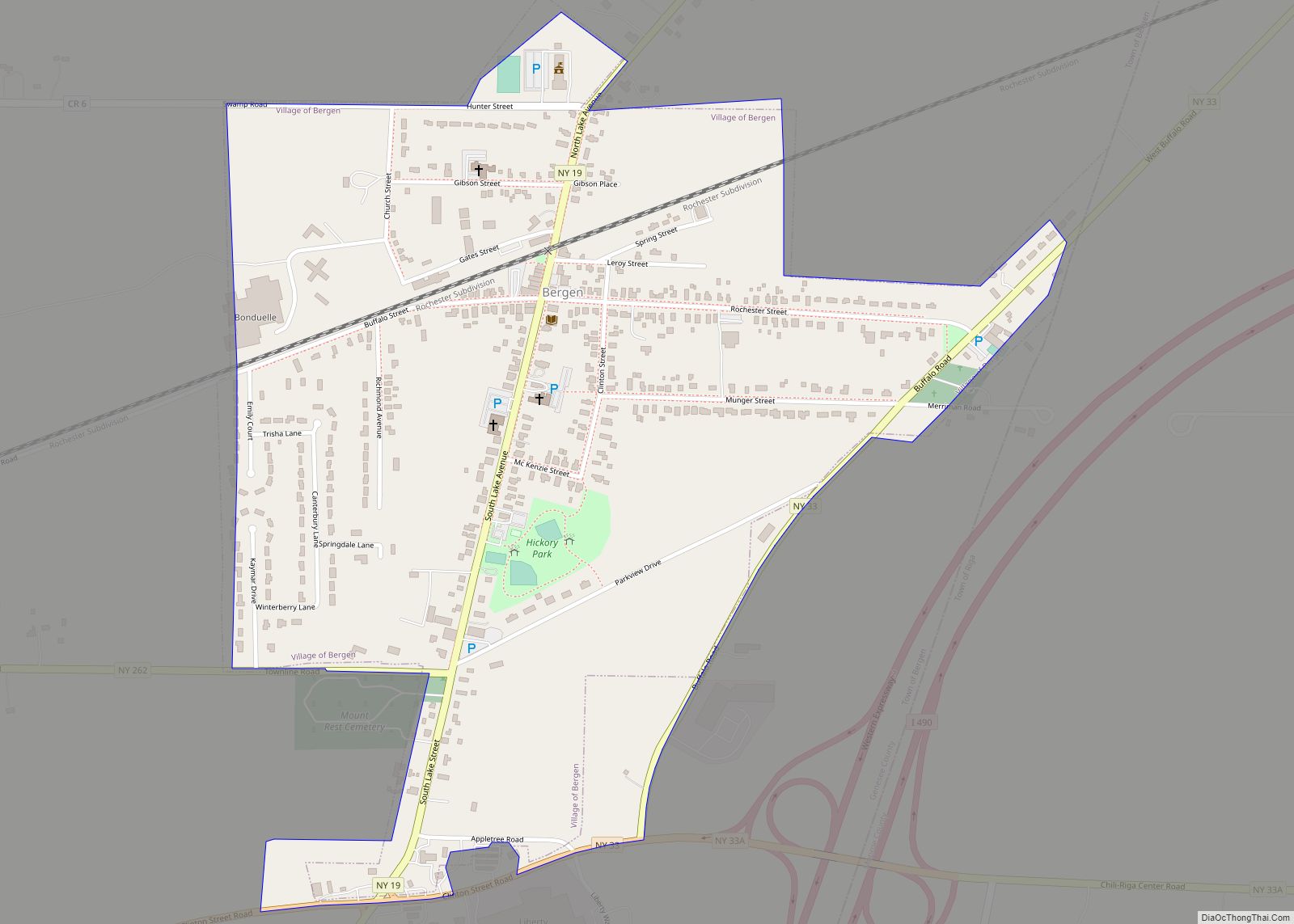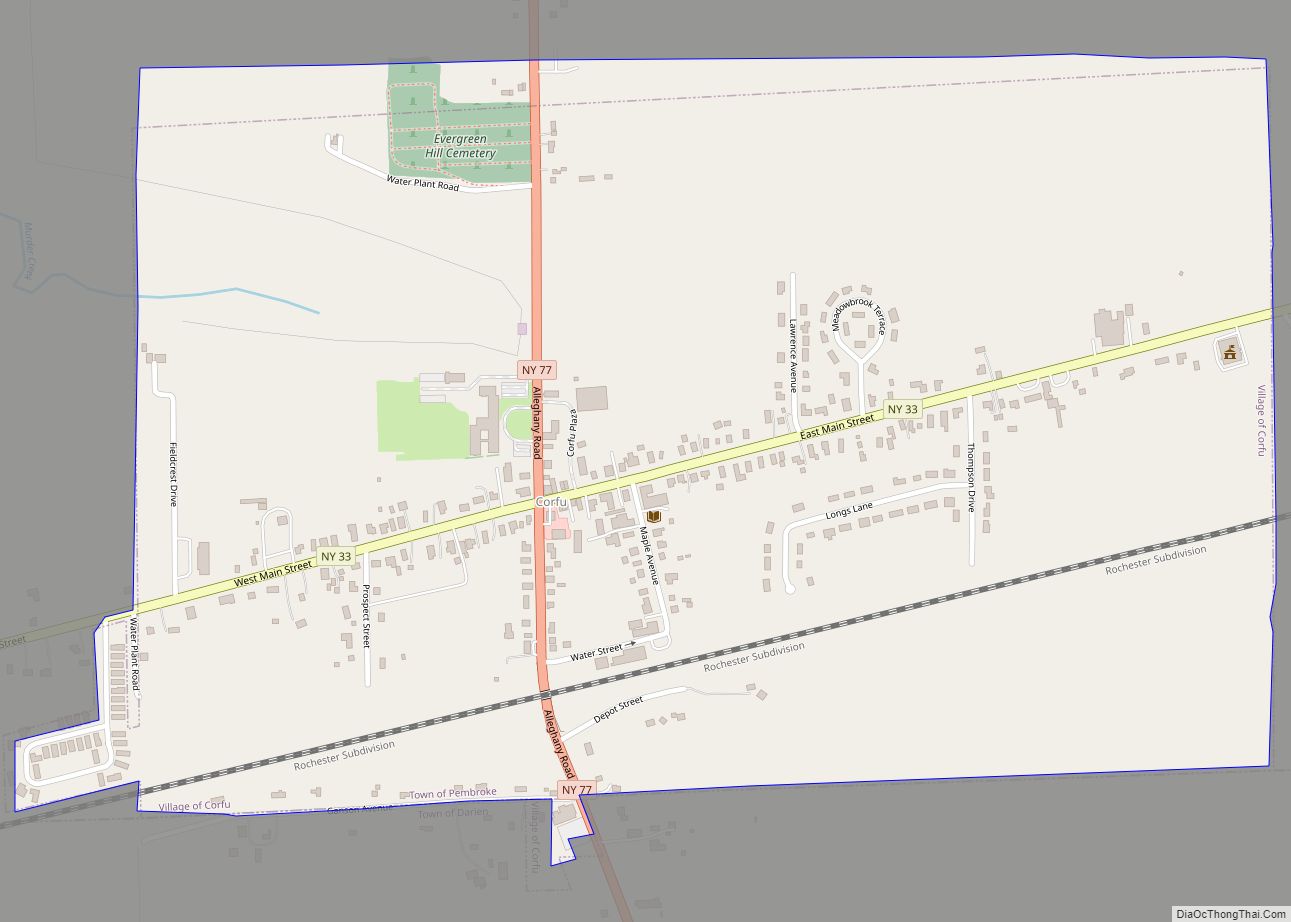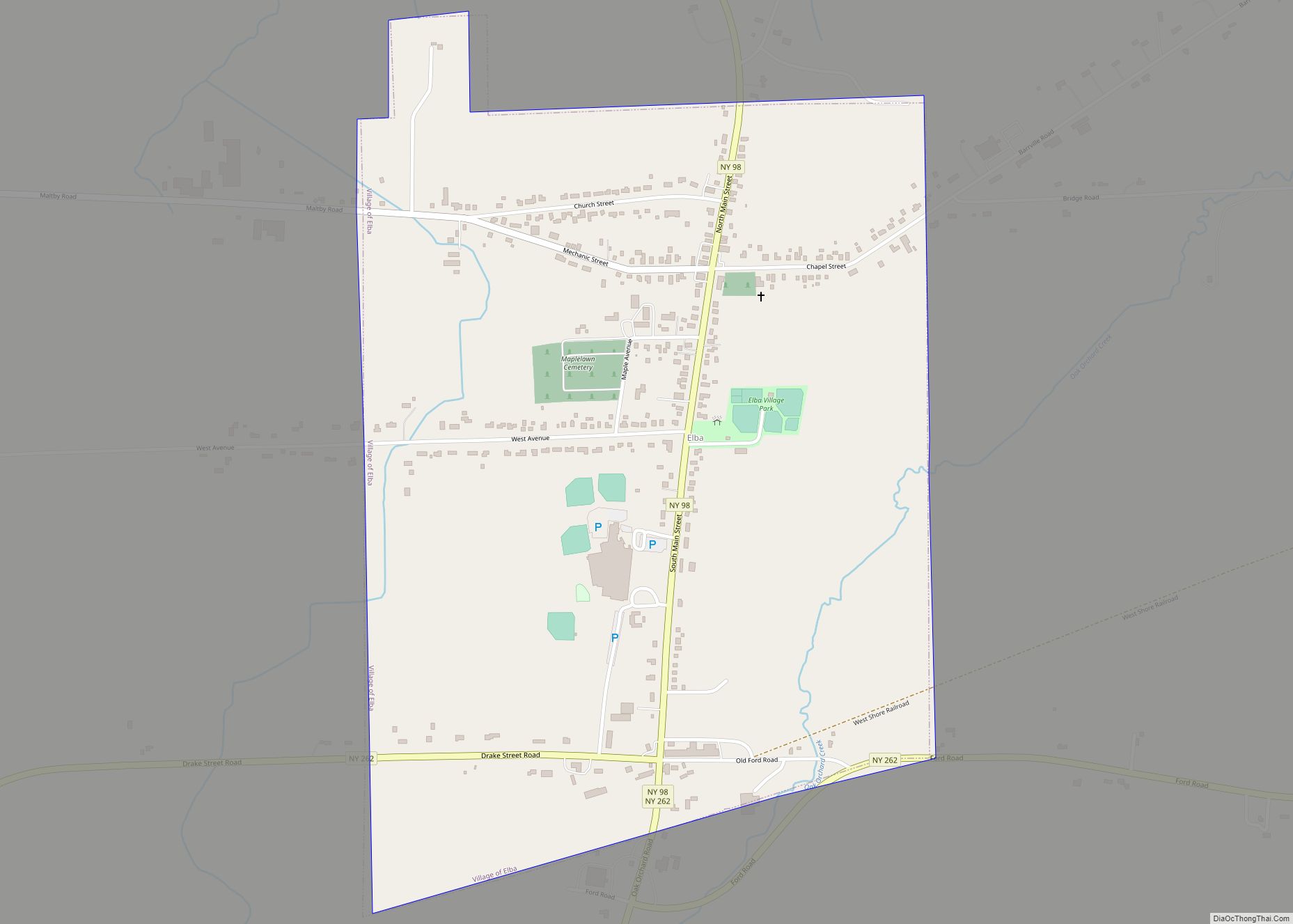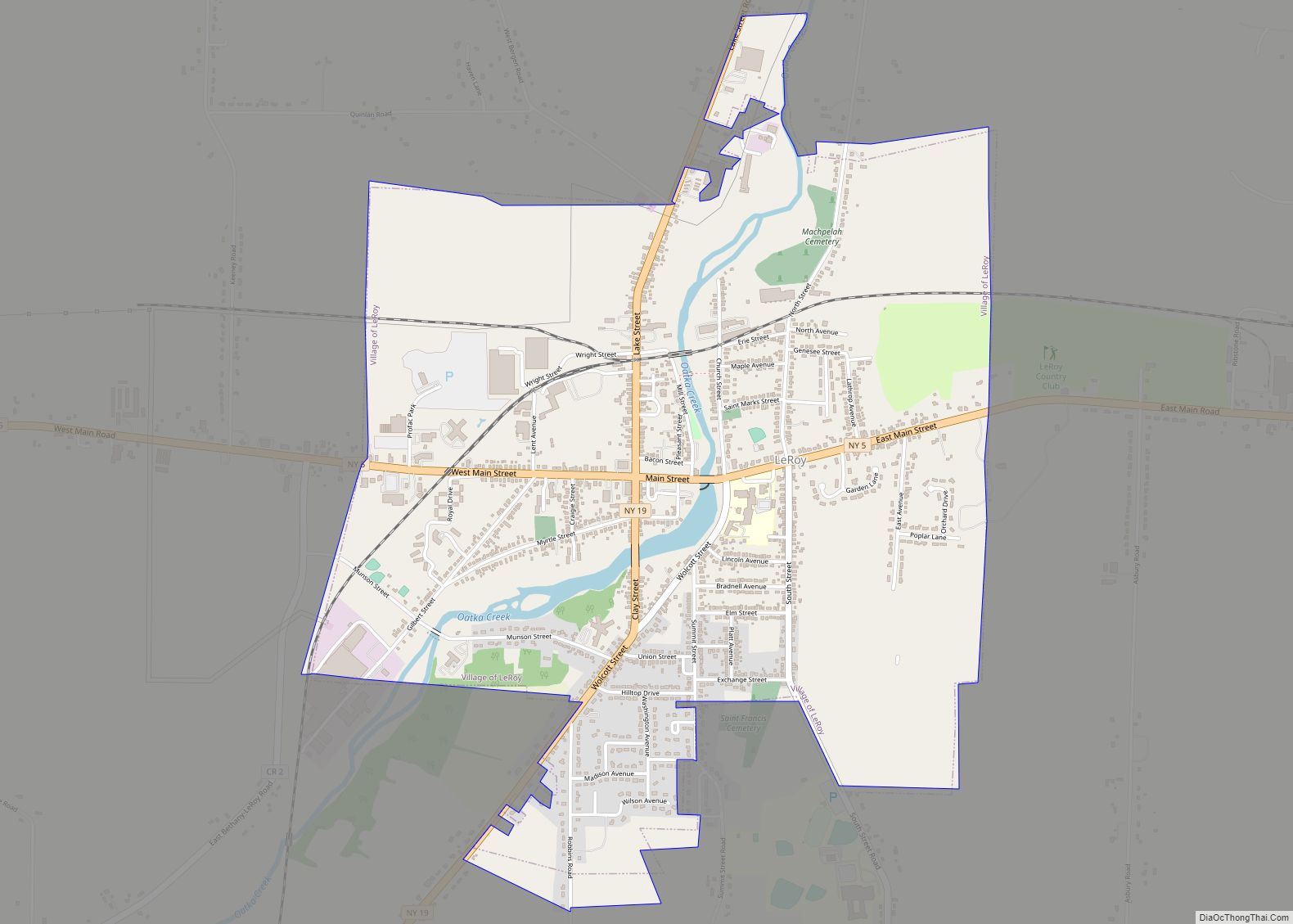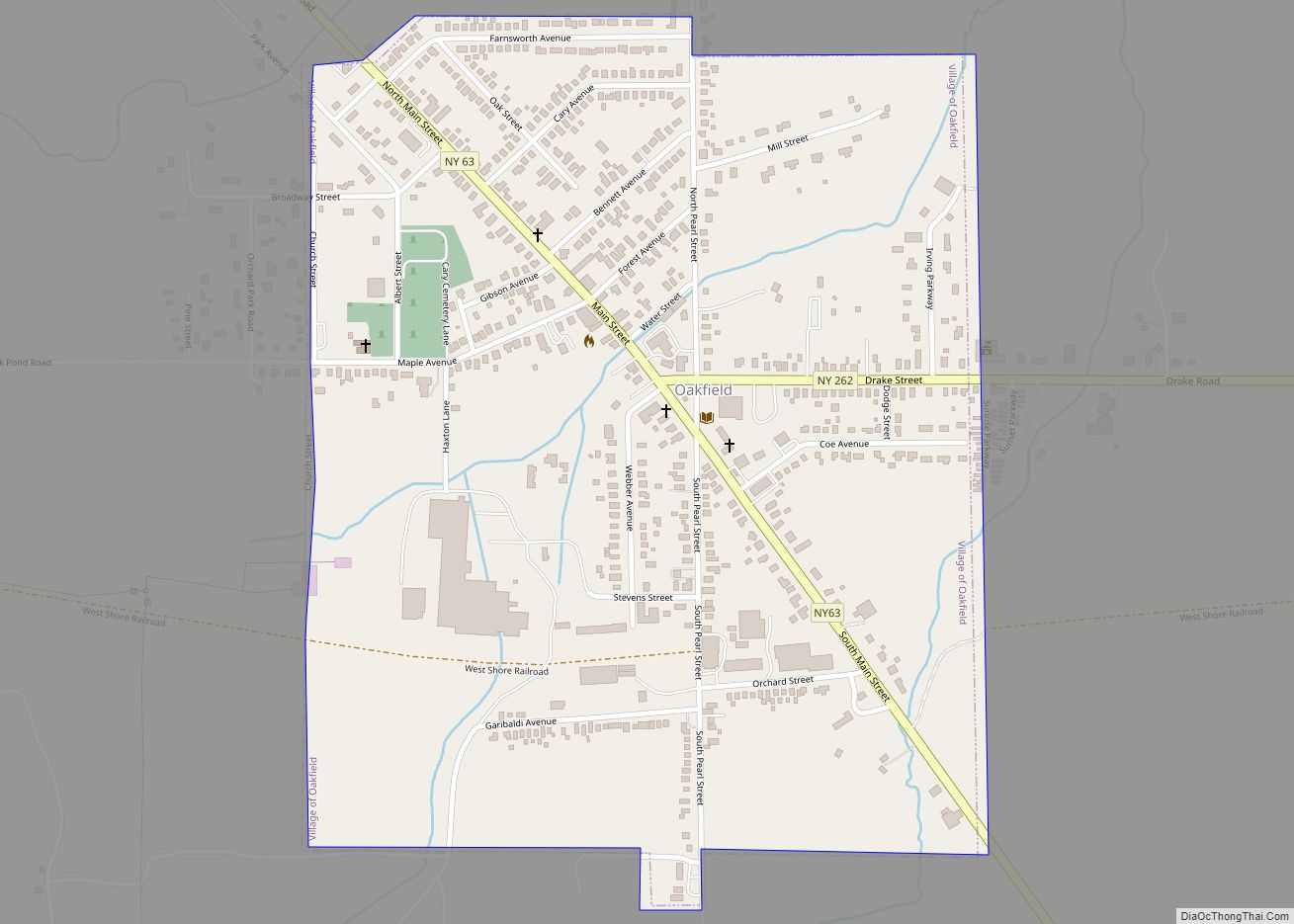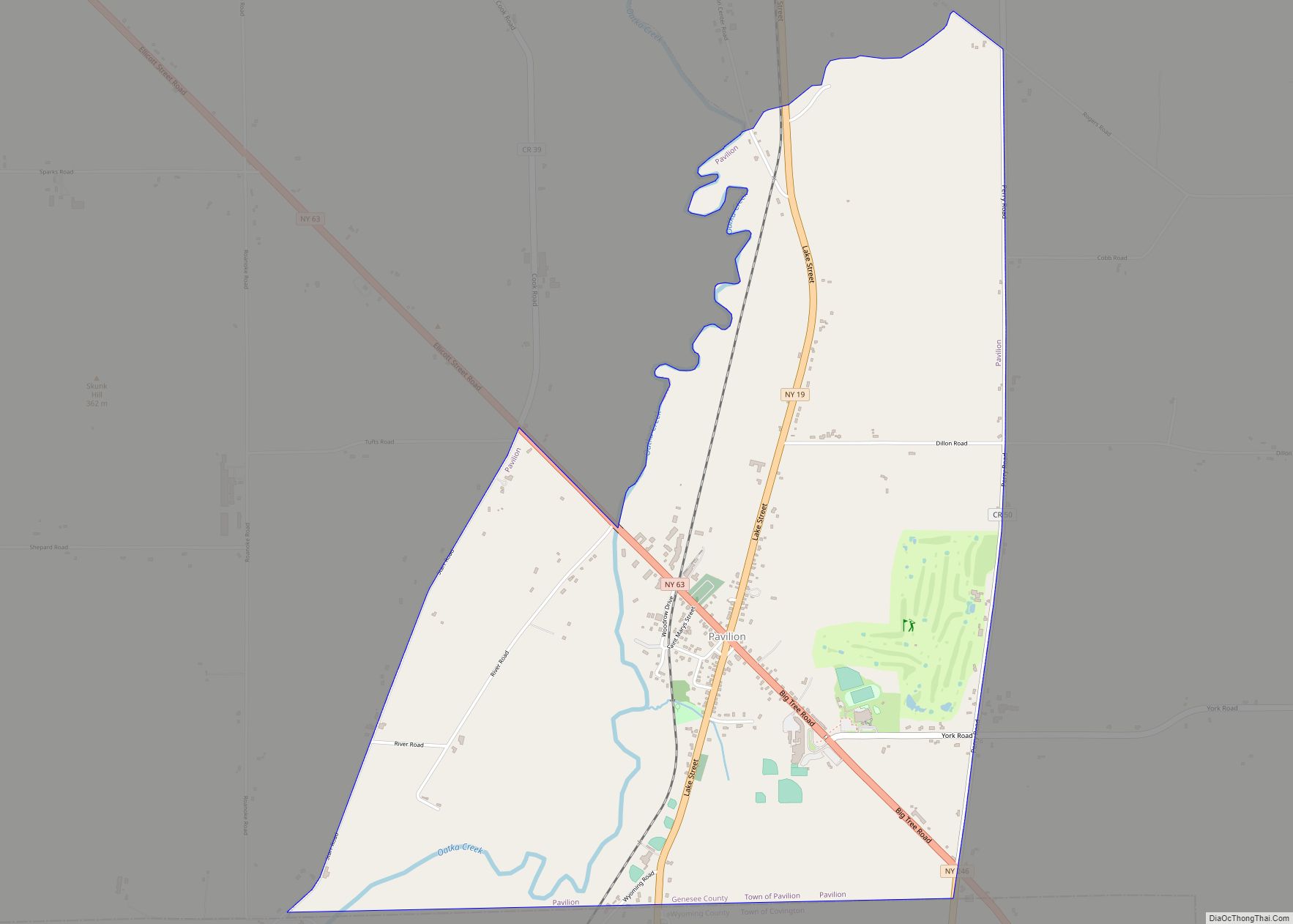Batavia is a city in and the county seat of Genesee County, New York, United States. It is near the center of the county, surrounded by the Town of Batavia, which is a separate municipality. Batavia’s population as of the 2020 census was 15,600. The name Batavia is Latin for the Betuwe region of the Netherlands, and honors early Dutch land developers. In 2006, a national magazine, Site Selection, ranked Batavia third among the nation’s micropolitans based on economic development. The New York State Thruway (Interstate 90) passes north of the city. Genesee County Airport (GVQ) is also north of the city.
The city hosts the Batavia Muckdogs baseball team of the Perfect Game Collegiate Baseball League, at Dwyer Stadium (299 Bank Street). The Muckdogs formerly were an affiliate of the Miami Marlins. They won the 2008 New York Penn League Championship.
The city’s UN/LOCODE is USBIA.
| Name: | Batavia city |
|---|---|
| LSAD Code: | 25 |
| LSAD Description: | city (suffix) |
| State: | New York |
| County: | Genesee County |
| Elevation: | 892 ft (272 m) |
| Total Area: | 5.28 sq mi (13.67 km²) |
| Land Area: | 5.20 sq mi (13.46 km²) |
| Water Area: | 0.08 sq mi (0.21 km²) 1.14% |
| Total Population: | 15,600 |
| Population Density: | 3,002.89/sq mi (1,159.33/km²) |
| ZIP code: | 14020 |
| Area code: | 585 |
| FIPS code: | 3604715 |
| GNISfeature ID: | 0943150 |
Online Interactive Map
Click on ![]() to view map in "full screen" mode.
to view map in "full screen" mode.
Batavia location map. Where is Batavia city?
History
Holland Land Company
The current City of Batavia was an early settlement in what is today called Genesee Country, the farthest western region of New York State, comprising the Genesee Valley and westward to the Niagara River, Lake Erie, and the Pennsylvania line. The tract purchased in western New York (the Holland Purchase) was a 3,250,000 acre (13,150 km) portion of the Phelps and Gorham Purchase that lay west of the Genesee River. It was purchased in December 1792, February 1793, and July 1793 from Robert Morris, a prominent Revolutionary banker, by the Holland Land Company, a consortium of Dutch bankers.
The village of Batavia was founded in 1802 by resident Land Agent Joseph Ellicott, under the authorization of Paul Busti of the Holland Land Company. Batavia, New York, was named by Paul Busti in honor of the Batavian Republic (1795–1806), a republican government of the Netherlands and home of the investors of the Holland Land Company.
One of the provisions of the sale was that Morris needed to settle the Indian title to the land, so he arranged for his son Thomas Morris to negotiate with the Iroquois at Geneseo, New York, in 1797. About 3,000 Iroquois, mostly Senecas, arrived for the negotiation. Seneca chief and orator Red Jacket was adamantly against the sale, but his influence was thwarted by freely distributed liquor and trinkets given to the women. He acquiesced and signed the Treaty of Big Tree, in which the tribe sold their rights to the land except for a small portion for $100,000. Mary Jemison, known as The White Woman of the Genesee, who was captured in a raid and married her Seneca captor, was an able negotiator for the tribe and helped win more favorable terms. In the negotiations Horatio Jones was the translator and William Wadsworth provided his unfinished home. The land was then surveyed under the supervision of Joseph Ellicott, a monumental task and the biggest land survey ever attempted to that time.
Ellicott, as agent for the company, established a land office in Batavia in 1802. The entire purchase was named Genesee County in 1802, with Batavia as the county seat. The company sold off the purchase until 1846, when the company was dissolved. The phrase “doing a land office business,” which denotes prosperity, dates from this era. The office is a museum today, designated a National Historic Landmark. Ellicott lived in Batavia for many years although he thought Buffalo would grow to be larger. Batavia has a major street named after him (Ellicott Street), as well as a minor street (Ellicott Avenue), and a large monument in the heart of the city. Batavia was incorporated as a village in 1823.
The present counties of western New York were all laid out from the original Genesee County, and the modern Genesee County is but one of many. But the entire area as a region is still referred to as Genesee Country. Thus, Batavia was the core from which the rest of western New York was opened for settlement and development.
Masonic Lodge scandal
A scandal erupted in Batavia in 1826, when William Morgan was offended by the local Masonic Lodge (Western Star Chapter R. A. M. No. 33 of Le Roy, New York), and threatened to expose the lodge’s secrets. He was arrested on a minor charge, then released when his charge was paid, into the company of several men, with whom he went, apparently unwillingly. It was developed later that the men were Masons, and they carried him to Fort Niagara, where he was held captive and then disappeared. Although the Masons claimed he was only bribed to cease publication and leave the area forever, public sentiment was that he was murdered. No conviction was ever obtained. His captors were only charged and convicted with his abduction.
The event roused tremendous public furor and anti-Mason sentiment. Anti-Masonry was a factor in politics for many years afterward, leading to the creation of the Anti-Masonic Party, as well as religion. Many Methodist Episcopal clergy had joined the Masons, and this was one of the reasons the Free Methodist Church separated.
Erie Canal
The Erie Canal in 1825 bypassed Batavia, going well to the north at Albion and Medina, enabling Buffalo and Rochester to grow much faster. With the sale of the western part of the state completed, Batavia became a small industrial city in the heart of an agricultural area. It became known for the manufacture of tractors, agricultural implements, sprayers and shoes. It also was a tool and die making center for industries in other areas.
The largest manufacturer, Johnston Harvester Company came into being in 1868. In 1910, the business was acquired by Massey-Harris Co. Ltd, and became a subsidiary of that Canadian company, founded by Daniel Massey in 1847.
Batavia grew rapidly in the early 20th century, receiving an influx of Polish and Italian immigrants. The City of Batavia was incorporated in 1915.
Recent history
Batavia is part of what has become known as The Rust Belt. In recent years much of the heavier industry left for other areas of the US, or abroad, and according to U.S. Census data there has been a gradual but consistent decline in the city’s population from 1960 forward.
The construction of the Buffalo Federal Detention Facility, a federal immigration detention center next to the airport has provided more jobs in the area, as well as expansion of the airport, including lengthening the runway to accommodate larger aircraft in 2005. Inmates at the detention center have included terrorism suspects, such as Nabil Ahmed Farag Soliman, who embarked on a hunger strike in 1999 after two and a half years in federal detention.
In August 2012, Muller Quaker Dairy broke ground on what was to be one of the largest yogurt manufacturing plants in the United States, and employed 170 people in December 2015. Muller Quaker Dairy is a joint venture between PepsiCo and the Theo Muller Group. On December 10, 2015, the closure of the yogurt plant was announced with the additional news that the facility would be sold to the Dairy Farmers of America cooperative.
Batavia Road Map
Batavia city Satellite Map
Geography
Geography
According to the United States Census Bureau, the city has an area of 5.2 square miles (13.6 km), of which 5.2 square miles (13.4 km) is land and 0.1 square mile (0.2 km) (1.14%) is water. The city also sits directly along the 43rd parallel north.
New York State Route 5 (east-west) intersects state routes 33, 63 and 98 in the city. The New York State Thruway (Interstate 90) is immediately north of Batavia.
Climate
This climatic region is typified by large seasonal temperature differences, with warm to hot (and often humid) summers and cold (sometimes severely cold) winters. According to the Köppen climate classification system, Batavia has a humid continental climate, abbreviated “Dfa” or “Dfb” on climate maps.
See also
Map of New York State and its subdivision:- Albany
- Allegany
- Bronx
- Broome
- Cattaraugus
- Cayuga
- Chautauqua
- Chemung
- Chenango
- Clinton
- Columbia
- Cortland
- Delaware
- Dutchess
- Erie
- Essex
- Franklin
- Fulton
- Genesee
- Greene
- Hamilton
- Herkimer
- Jefferson
- Kings
- Lake Ontario
- Lewis
- Livingston
- Madison
- Monroe
- Montgomery
- Nassau
- New York
- Niagara
- Oneida
- Onondaga
- Ontario
- Orange
- Orleans
- Oswego
- Otsego
- Putnam
- Queens
- Rensselaer
- Richmond
- Rockland
- Saint Lawrence
- Saratoga
- Schenectady
- Schoharie
- Schuyler
- Seneca
- Steuben
- Suffolk
- Sullivan
- Tioga
- Tompkins
- Ulster
- Warren
- Washington
- Wayne
- Westchester
- Wyoming
- Yates
- Alabama
- Alaska
- Arizona
- Arkansas
- California
- Colorado
- Connecticut
- Delaware
- District of Columbia
- Florida
- Georgia
- Hawaii
- Idaho
- Illinois
- Indiana
- Iowa
- Kansas
- Kentucky
- Louisiana
- Maine
- Maryland
- Massachusetts
- Michigan
- Minnesota
- Mississippi
- Missouri
- Montana
- Nebraska
- Nevada
- New Hampshire
- New Jersey
- New Mexico
- New York
- North Carolina
- North Dakota
- Ohio
- Oklahoma
- Oregon
- Pennsylvania
- Rhode Island
- South Carolina
- South Dakota
- Tennessee
- Texas
- Utah
- Vermont
- Virginia
- Washington
- West Virginia
- Wisconsin
- Wyoming
